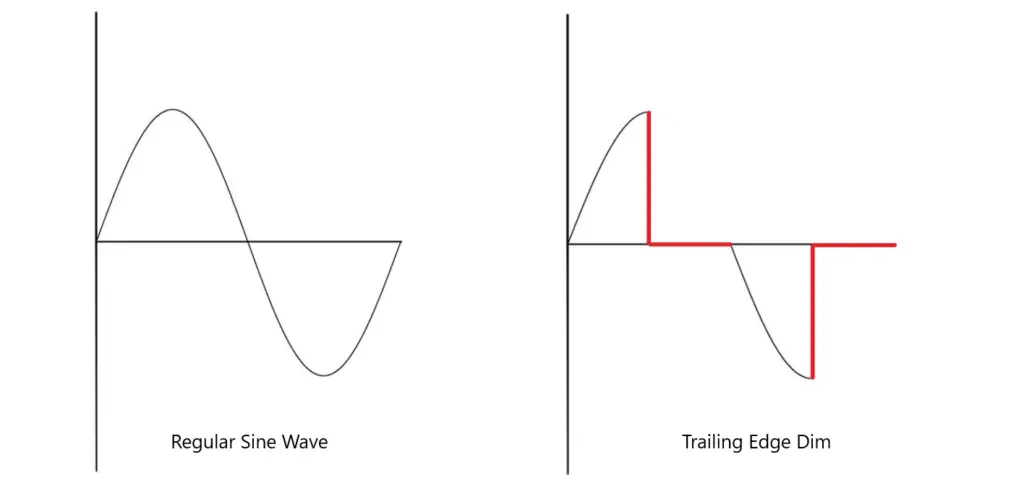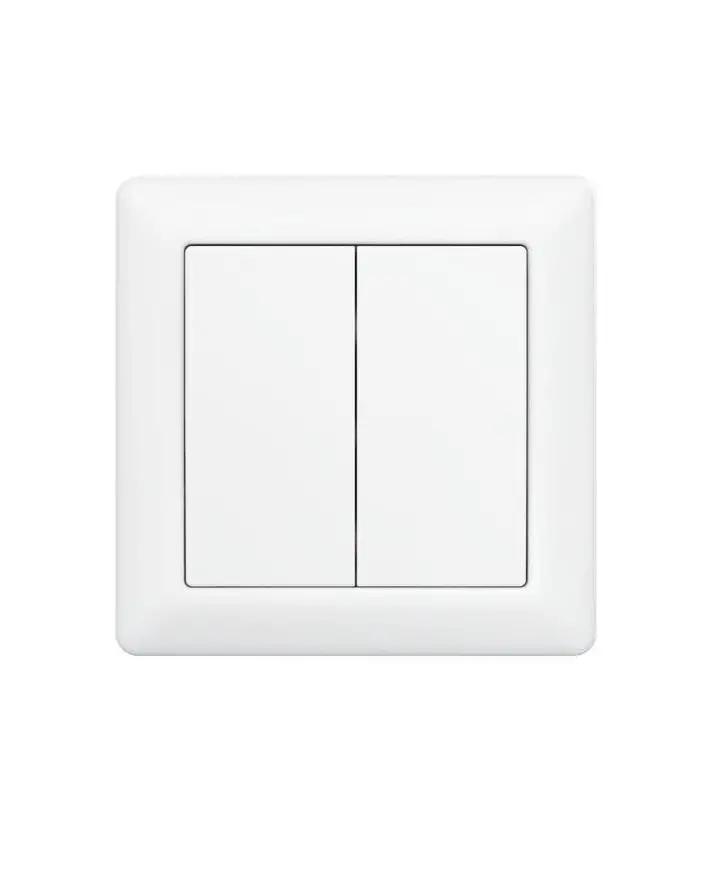How Many LEDs Can You Put On A Dimmer Switch?
If you’re ever in a situation where you are concerned about the amount of LED lights you can connect to a single dimmer switch, you are in the right place.
For a dimmer switch with a marked maximum load of 300W, you can safely connect 3 LED lights with a marked watt of 8-10W. For a 600W dimmer, you should be able to connect up to 6 or 7 LED lights without issues. If you overload the dimmer you run the risk of it tripping its circuit breaker.
Connecting LEDs to a dimmer isn’t as straightforward as simply looking at the watt rating of the LED and comparing it straight to the watt of the dimmer.
This has to do with the way LEDs behave since their properties in an electrical circuit aren’t quite the same as an incandescent bulb. This will be further elaborated on under the subheading Can You Overload A Dimmer?
How Many LEDs Can Be On A Single Dimmer Switch?
In order to determine how many LEDs you can fit on a dimmer switch there are a few factors that should be considered. The main factors to consider are:
- The marked wattage (W) on the dimmer switch
- The marked wattage of the LEDs you are trying to connect to the dimmer switch
- If your dimmer is compatible with LED lighting
Firstly we will focus on the first two aspects. Down below we have a table with some common wattage markings for dimmers as well as for LEDs. This tells us how many LEDs of each strength we can put on a dimmer of each capacity.
| Dimmer Watt | 6W LED | 8W LED | 10W LED | 12W LED |
|---|---|---|---|---|
| 150W | 2-3 | 2 | 1 | 1 |
| 300W | 5 | 3-4 | 3 | 2 |
| 600W | 10 | 7-8 | 6 | 5 |
| 1000W | 16-17 | 12-13 | 10 | 8-9 |
These numbers are calculated by dividing the marked wattage of the dimmer by 10 and seeing how many LED bulbs you can fit within that new wattage. By being conservative and dividing the watt by 10 you shouldn’t have to worry about the inrush currents.
That said, this is all based on dimmers made specifically for resistive loads like incandescent and halogen bulbs. If the dimmer is specifically made for LEDs you should be able to load it with as many LEDs as the marked wattage of it allows.
Can You Overload A Dimmer?
When it comes to putting LEDs on a dimmer it isn’t quite the same process as putting incandescent bulbs on them. With incandescent bulbs, you are able to simply look at the wattage of the bulb and make sure it doesn’t exceed that of the dimmer switch.
However, when it comes to LEDs you have to be more careful with how much you load the dimmer. This has to do with the way LEDs behave as an electrical load.
When an incandescent bulb is powered on its electrical current is always directly proportionate to the voltage it’s provided with. This is because they are pure resistive loads due to the tungsten filament inside of them being the main light-producing component. Click here to learn more about Why Tungsten Is Used In Light Bulbs.
That said, unlike incandescent bulbs, LEDs’ electrical current isn’t always proportionate to the voltage it receives. When an LED is powered on there is an inrush current that is much larger than the current it normally maintains during use.
While this inrush current only lasts a few fractions of a second it can still be important in terms of loading LEDs on a dimmer switch. The inrush of a single LED is usually not a big deal, but the more LEDs you add to the equation the larger this inrush current becomes.
Consequences Of Overloading A Dimmer Switch With LEDs
Having a large inrush current with LED lights can come with a few consequences. The main consequence of this can be that the circuit will trip the breaker every time it is turned on.
Circuit breakers react directly to large electrical currents, and if the inrush current is too large it will trigger the breaker instantly.
Another consequence of overloading a dimmer with LEDs is that they are able to cause damage to other appliances or equipment on the same lighting system. This is because the current inrush can damage the electronics inside other parts of the system.
There is one more consequence to overloading a dimmer which should be considered, and this is the construction of the dimmer itself.
A dimmer switch is only meant to handle so many loads, meaning that if you load it with too many lights it may carry a current too big for it to handle. This will cause it to overheat and become a potential fire hazard.
Can You Underload A Dimmer?
On the other end, we also need to discuss the possibility of underloading the dimmer switch. Since LEDs in their normal running state are rather small electrical loads a dimmer switch can be underloaded.
Underloading of a dimmer isn’t always super precise in terms of how few loads it can be connected to for it to be considered overloaded, but a good rule of thumb is that it will be around 10% of the marked wattage on the dimmer.
So for example, on a dimmer switch marked 300W the minimum load you want to attach to it would be a total of 30W.
This means that loading a dimmer with around 10% of its total marked wattage with LED watts works for circumventing both underloading and overloading your dimmer switch.
Consequences Of Underloading A Dimmer Switch With LEDs
We have now established that it is indeed possible to underload a dimmer switch, but what happens when you underload it?
The main thing that happens when you underload a dimmer switch is that it simply won’t dim properly. This can include things such as flickering or the LEDs not turning on at all.
This is because when a dimmer switch is underloaded it can’t properly convey and receive currents and signals, meaning that it will struggle to control the lights as intended.
Normally there is no real damage to equipment or anything of that nature like there is with overloading a dimmer. That said, functionally speaking underloaded dimmers are quite unpredictable in how they will behave.
Is Your Dimmer Switch Compatible With LED Lighting?
Now that we have discussed how many LEDs can be connected to a dimmer switch we should discuss a pre-requisite for all of this to function in the first place. This prerequisite has to do with the compatibility between the dimmer itself and LED lights.
To understand this we will look at two different dimming methods used to dim LEDs. These are:
- Phase Dimming (Pulse Width Modulation, PWM)
- Amplitude Width Modulation (AWM)
These dimming methods refer to the altering and modification of the sine wave that’s present in all AC circuits. Most dimmers make use of Pulse Width Modulation (PWM).
PWM implies that we modify the width of the sine wave by cutting it off at different amounts depending on how much the light should be dimmed. If a light should be dimmed at 50% you would simply remove 50% of the length of the sine wave.

Modifying the sine wave like this can be done in two ways. Like the image above describes, it’s possible to dim the trailing edge of the sine wave. It is also possible to do the opposite of this, which is referred to as leading edge dimming.
One of these forms of PWM dimming is more suitable for LEDs than the other though, which would be trailing edge dimming.
Trailing edge dimming is better for LEDs since the current will gradually build as the sine wave reaches its peak before it drops off. Leading edge dimming on the other hand will constantly give the LED spikes in voltage as it powers it.
LEDs are electrical loads and can therefore be quite sensitive. Putting them on a leading-edge dimmer can cause internal damage because of this.
AWM dimming on the other hand is rather safe for LEDs. AWM dimming implies simply lowering the electrical current that enters the LED which will cause it to dim down.
This is safe for LEDs due to it being a very gentle way to dim them down. Click here for a full article on Are LED Bulbs Dimmable? where I explain these dimming methods in more depth.
Summary
To summarize the contents of this article, here are some of the main takeaways.
- The amount of LED lights you can place on a dimmer depends on its marked wattage and the watts of your LEDs. You should be able to fit 3-4 LEDs on a 300W dimmer and 6-7 on a 600W dimmer.
- If you overload a dimmer you run the risk of damaging the electronic equipment on the lighting circuit and overheating the dimmer.
- If you underload a dimmer it may not work as intended.
- Trailing edge dimmers are the best type of common dimmer to use in conjunction with LED lights.


